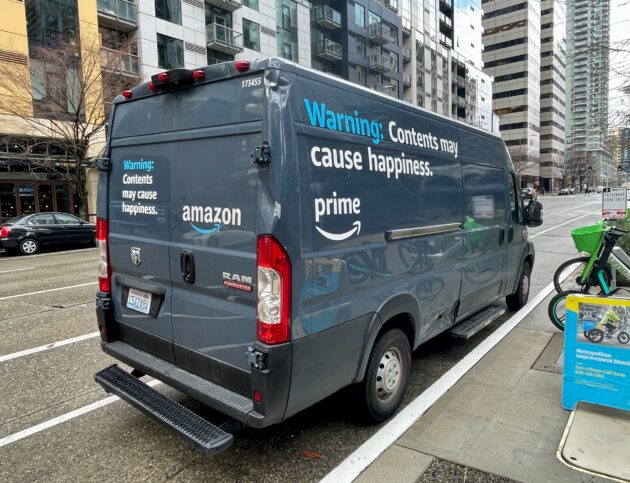How Does Amazon Deliver
So Fast?
Explore their innovative logistics & fulfillment system.
Amazon is a complex company with many moving parts, but its core business model can be broken down into three main stages:
You’re right, Amazon’s business model is multifaceted, but focusing on the three core stages can offer a clear understanding:
Amazon acts as a platform for third-party sellers to list and sell their products. This marketplace model allows Amazon to offer a vast selection of products without having to stock or manage them all itself.
Stage 1: Acquisition
Sourcing: Amazon sources products from various channels, including:
Directly from manufacturers and wholesalers: This grants them more control over pricing and inventory.
Third-party sellers: The Amazon Marketplace allows individual and business sellers to list their products, expanding Amazon’s selection and generating revenue through fees.
Private labels: Amazon designs and manufactures its own product lines under various brands, offering competitive pricing and higher profit margins.
Sellers can choose to fulfill orders themselves (FBM) or use Amazon’s fulfillment services (FBA). FBA means that Amazon stores the seller’s inventory in its fulfillment centers and handles picking, packing, and shipping for them.
Amazon takes a commission on each sale made through its marketplace.
Fulfillment:

Amazon has a vast network of fulfillment centers around the world. These centers are strategically located to be close to large populations, which allows Amazon to offer fast and efficient shipping.
When an order is placed, Amazon’s system determines which fulfillment center is closest to the customer and has the product in stock. The order is then sent to that fulfillment center, where it is picked, packed, and shipped.
Amazon uses a variety of technologies to automate the fulfillment process, such as robots and conveyor belts. This helps to keep costs down and ensure that orders are shipped quickly and accurately.
Stage 2: Fulfilment & Delivery
Warehousing: Amazon boasts an extensive network of warehouses strategically located for faster delivery. This allows them to store a vast inventory and manage product distribution efficiently.
Logistics: Amazon has invested heavily in its logistics infrastructure, including its own transportation fleet and delivery network. This enables them to offer fast and reliable delivery options like Prime Same-Day or Prime Now.
Delivery:

Amazon offers a variety of shipping options, including same-day, one-day, and two-day delivery. Prime members have access to free two-day shipping on all eligible orders.
Amazon delivers its own packages in some areas, but it also relies on third-party delivery companies, such as UPS and FedEx.
Amazon is constantly innovating in its delivery methods, such as testing drone delivery and self-driving delivery vehicles.
Stage 3: Customer Experience & Monetization
Platform & Search: Amazon provides a user-friendly online platform with advanced search functions, product recommendations, and reviews. This enhances customer experience and drives sales.
Marketing & Advertising: Amazon offers various advertising solutions for sellers to promote their products on the platform, generating revenue through sponsored listings and ad placements.
Prime Membership: Amazon Prime offers a subscription service with benefits like free and faster shipping, exclusive deals, and access to streaming services. This incentivizes customer loyalty and generates recurring revenue.
